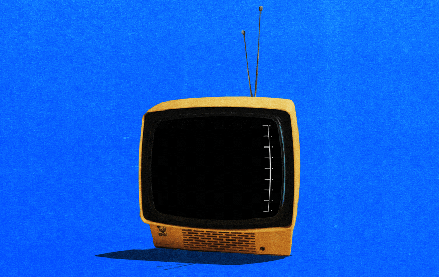Future of TV Briefing: Separating signal from noise when it comes to CTV advertising’s content signal complaints

This Future of TV Briefing covers the latest in streaming and TV for Digiday+ members and is distributed over email every Wednesday at 10 a.m. ET. More from the series →
This week’s Future of TV Briefing looks at how noisy content signals are confounding CTV’s contextual advertising opportunity and what makes the situation even more confounding.
- CTV’s noisy signals
- Paramount’s new Nielsen deal, Nielsen’s new network spat, the Super Bowl of AI advertising and more
CTV’s noisy signals
Remember those old-fashioned bunny ears that used to sit atop TVs? How you needed to fiddle with them to get a clear signal but the signal-to-noise ratio was always a bit out of whack? Yeah, the streaming ad market’s supply chain is kinda like that.
For one thing, ad buyers feel like there aren’t enough signals being passed communicating what kinds of content will carry their ads. For another, the content signals that are being passed can be enveloped in noise, with streaming ad sellers adopting different nomenclatures or obfuscating the information being sent. And for a third, too much of the industry seems unaware that a fix exists (or are unmoved to adopt it).
This noisy signal situation came up in a town hall session held last week during the Interactive Advertising Bureau’s Annual Leadership Meeting in Palm Springs, California. Open to executives from brands, agencies, publishers and ad tech firms, the session titled “Streaming TV’s Next Chapter: Preparing for What’s Ahead in 2025” touched on the role of contextual advertising going forward — and seemed to touch a nerve.
“Some of the challenges we’ve seen with contextual has been the passing of content signals and being able to get the right contextualization of a program. Different broadcasters sending different signals, different namings, different spellings and so on,” said one participant in the town hall.
Another participant highlighted how content signals can be co-opted to not actually signal what content an ad would be running against.
“We ran into a situation where news is very polarizing, and we have PMP deals set up [to exclude ads from running against news inventory]. And content providers decided that they needed more revenue during the quarter, and so they changed their classification from news to undisclosed. Didn’t tell anyone,” said the second participant. “Now we have ads running next to Molotov cocktails and very polarizing information. And of course, the client sees it and bans us from, you know, situations. And that was all because there’s no regulations around how contextual or content is passed.”
Which gets at what emerged as the main takeaway from the session: The need for standards when it comes to content signals.
“There needs to be some kind of industry taxonomy, it sounds like,” said a third participant in the town hall session.
This town hall session wasn’t the only context during IAB ALM in which the need for content signal standards came up. During an on-stage session, Index Exchange CEO Andrew Casale also raised the point.
“The way one television provider might communicate the genre from a taxonomy perspective might be totally different from another provider’s taxonomy,” said Casale. “In short, we have to solve the description or the metadata problem within CTV.”
Here’s the maybe frustrating thing, though. There is a solution for this taxonomy issue. It’s called Content Taxonomy.
IAB Tech Lab updated the standard to Content Taxonomy 2.0 in June 2022 to include CTV genres, and in December 2024, it released the latest version, Content Taxonomy 3.1, to coincide with the OpenRTB 2.6 specification — the standard for programmatic advertising bid requests — which added support for attaching genre signals to bid requests.
Actually, that’s not the frustrating part.
In a survey of respondents during an IAB Tech Lab event on CTV — a barrel-full of progressive programmatic CTV executives, if you will — more than a quarter of respondents said they were still using Content Taxonomy 1.0. Now here’s the frustrating part: Not only does Content Taxonomy 1.0 not feature the CTV genre signals introduced in the 3.0 version, but it was deprecated in … July 2020.
What we’ve heard
“We saw a four-times increase in the revenue from [YouTube series] ‘Open Door’ from shopping it out on the site.”
— Architectural Digest’s Amy Astley on the latest Digiday Podcast episode
Numbers to know
$8 million: How much Fox is charging for some 30-second ad spots in this weekend’s Super Bowl.
36 million: Number of subscribers that NBCUniversal’s Peacock had at the end of 2024.
-123,000: Number of pay-TV subscribers that Charter lost in the fourth quarter of 2024.
13%: Percentage share of streaming ad time that went to Hulu in 2024.
$17 billion: How much money advertisers are expected to spend on streaming ads this year.
What we’ve covered
Here’s what else a $7M, 30-second Super Bowl budget can purchase in 2025:
- A Super Bowl-sized ad spend could fetch 1.35 billion ad impressions on TikTok.
- It could also garner 214 million impressions on Amazon Prime Video.
Read more about Super Bowl ad alternatives here.
How publishers pull YouTube viewers to shop on their sites, with Architectural Digest’s Amy Astley:
- The Condé Nast-owned publication started pushing viewers of its YouTube series “Open Door” to shop featured products on its site last year.
- Next month Architectural Digest plans to relaunch its AD Shopping property.
Listen to the latest Digiday Podcast episode here.
Why marketers are taking a ‘lighter approach’ to Super Bowl advertising this year:
- Brands seem to be veering away from purpose-based spots in favor of a return to entertainment fare.
- The shift seems to be a reaction to the culture war that brands have been dragged into.
Read more about advertisers’ Super Bowl approaches here.
How creators are growing beyond the Super Bowl this year, from creator houses to fan festivals:
- Creators will be hosting live events around the Super Bowl.
- They’re also holing up at creator-only houses to create content and secure brand deals.
Read more about creators’ Super Bowl involvement here.
LinkedIn’s video push appears to be working in 2025:
- Short-form video is the fastest-growing content category on LinkedIn.
- The platform’s publisher program includes more than 500 publishers and journalists.
Read more about LinkedIn’s video push here.
What we’re reading
CBS’s parent company has reached a détente with the measurement provider after a months-long standoff and in the wake of Nielsen receiving MRC accreditation for its panel-plus-data measurement system and announcing the sunsetting of its panel-only system, according to Ad Age.
Nielsen’s new TV network spat:
The measurement provider is in a standoff with TelevisaUnivision over a single household that the network claims is skewing Nielsen’s measurement of Spanish-speaking audiences in the U.S., according to Variety.
The Super Bowl of AI advertising:
AI companies and products are expected to pervade the commercial breaks during this weekend’s Super Bowl, according to The Hollywood Reporter.
AI gets Copyright Office’s OK:
The U.S. Copyright Office has decided a creative work can be copyrighted if AI technology is used in its creation, so long as the technology’s use is assistive to a person as opposed to in place of a person, according to Ars Technica.
Want to discuss this with our editors and members? Join here, or log in if you're already a member.
More in Future of TV

Future of TV Briefing: How the future of TV shaped up in 2025
This week’s Future of TV Briefing looks back at the top topics and trends that overtook the TV, streaming and digital video industries in 2025.

Programmatic agency execs speak out on CTV transparency
At the recent Digiday Programmatic Marketing Summit, agency executives spoke out — on stage and in behind-closed-door town hall sessions — on how they see transparency in CTV.

Future of TV Briefing: How agencies are setting up their programmatic teams for the agentic AI era
This week’s Future of TV Briefing recaps two sessions from last week’s Digiday Programmatic Marketing Summit about how agencies’ programmatic buying teams are evolving.








